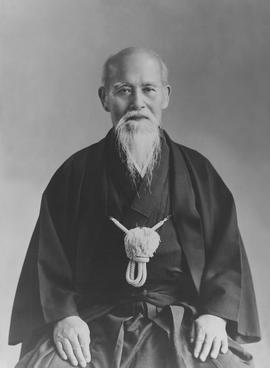 Aikido ( 合気道 ) is a Japanese martial art, which was created by Morihei Ueshiba (O-Sensei) in the early 20th century. The main difference of this martial art compared to others is that Aikido is non-competitive, which is why it is not known as a sport. The creator of Aikido, as a former soldier, felt the need to create a system of self-defence techniques, where the goal is not to destroy the opponent, but to control them instead. Most Aikido techniques are derived from other, pre-existing martial arts, but the underlying idea of Aikido is different from them – its aim is to be mentally superior to the attacker and not try to kill them. Hombu Dojo the headquarters of Aikido in Japan, continues to carry this principle to this day.
Aikido ( 合気道 ) is a Japanese martial art, which was created by Morihei Ueshiba (O-Sensei) in the early 20th century. The main difference of this martial art compared to others is that Aikido is non-competitive, which is why it is not known as a sport. The creator of Aikido, as a former soldier, felt the need to create a system of self-defence techniques, where the goal is not to destroy the opponent, but to control them instead. Most Aikido techniques are derived from other, pre-existing martial arts, but the underlying idea of Aikido is different from them – its aim is to be mentally superior to the attacker and not try to kill them. Hombu Dojo the headquarters of Aikido in Japan, continues to carry this principle to this day.
Aikido training, seminars and demonstrations are structured in such a way that everyone must be able to train with everyone, be it a man or a woman, regardless of their age. In Aikido training, harmony is key and understanding the goal of the creator of Aikido to move towards a more harmonious world where senseless violence no longer has a place. Aikido techniques are designed for both self-defence and to maintain calmness in the middle of conflict situations which need to be resolved.
Aikido came to Estonia towards the end of the 20th century, when this martial art was presented for the first time in a demonstration session in Tallinn. A group of enthusiasts emerged, who later created their own clubs and invited others to join them in practicing the art. The activities of these clubs and the development of the Aikido tradition in Estonia created the opportunity for the birth of the Estonian Aikido Federation and its joining with the international system, which is known today as the International Aikido Federation (IAF)
